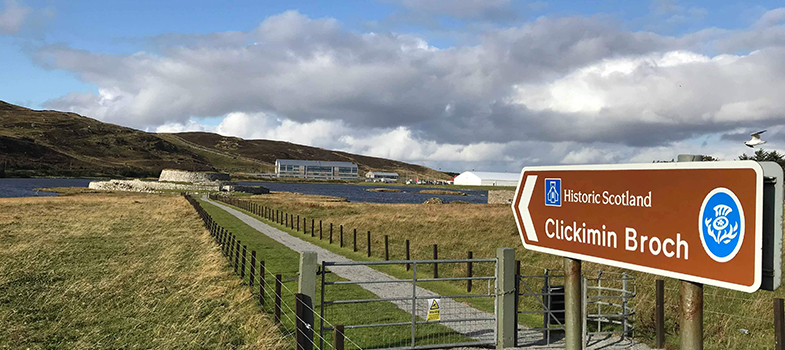12.4 Case study: The distinctive song tradition of north-east Scotland
In this section, you are going to focus on the songs of north-east Scotland as examples of distinctive song types and a highly distinctive tradition that has rich resources documenting its history.
Activity 6
As you read through this case study, make notes on the key aspects you want to ‘take away’ from this as you go.
For example:
- The Greig-Duncan Folk Song Collection is the most important collection in the north-east, consisting of over 3,000 song versions.
- Farmworkers in the north-east sang (and often composed) songs about farms where they worked, called ‘bothy ballads’ after the building in which they were sometimes housed.
Again, you might want to look up examples of songs mentioned in this section using the online archives you came across in section 3.
The Scots song tradition of the north-east of Scotland is arguably the best documented and resource-rich in terms of the recordings and collections of songs that exist from a single area. This richness has had a major influence on the Scots song tradition as a whole, in particular the versions of classic ballads or ‘muckle sangs’ found there. A great deal of fieldwork collecting on audio tape was done in the north-east from the 1950s by the School of Scottish Studies and the Elphinstone Institute, often finding songs still in the oral tradition that were collected by Greig and Duncan some fifty years before.
A unique song type found in great number in the north-east is the bothy ballad, a term which is much-debated. A ‘bothy’ was the basic accommodation of farmworkers – who often wrote and performed such songs – mainly during the 19th century. Usually unmarried workers would live in self-catering bothies, although this was only true in some areas; other areas used the ‘kitchie’ system, where the workers would get their meals in the farm kitchen.
While Aberdeenshire is best known as the home of bothy ballads, there were actually more bothies in Angus. Bothy ballads are found to a small degree in other areas of Scotland as well, e.g. Kintyre, but are most closely associated with the north-east.
There are two distinct types of bothy ballad, which we might call ‘traditional’ and ‘cornkisters’:
Traditional bothy ballads were mostly composed between 1830-1890, and are often characterised as being songs decrying the conditions on a certain farm […] gaining notoriety for places such as Drumdelgie, the Barnyards o Delgaty or Rhynie. However, bothy ballad expert Ian Olson points out that the songs were jokes rather than satires […] Delgaty, for example, was a prestigious farm, "famous for having the very best of equipment, horses and horsemen. Singing that there was 'naethin there but skin and bone' would have been hilarious".
‘Cornkisters’ tends to be the name used for the more comic ‘stage’ bothy songs written in the 20th century by Willie Kemp, G.S. Morris and George Bruce Thomson and others. The cornkist was the wooden storage chest of oatmeal found in the bothy, and the loons or chiels might sit on their kist to sing, sometimes beating out a rhythm with their heels. These compositions from the 1920s and ‘30s were performed in concert and featured on gramophone recordings and printed songbooks, including The Muckin o Geordie’s Byre; A Pair o Nicky Tams and MacFarlane o the Sprotts o Birnieboosie.
The language of cornkisters is usually in dense north-east dialect which can be viewed on the one hand as enhancing the rhythm, comedy and colour of the songs, but on the other hand potentially exposes north-east Scots (often locally called ‘Doric’) as only being used for non-serious purposes.
While bothy songs were fairly widespread in their heyday, they are seen more as a curiosity nowadays, restricted more to specialist events and singing festivals.The tradition of bothy ballad singing is supported every year through an annual competition called the ‘Champion of Champions’ in Elgin, organised by the TMSA (Traditional Music and Song Association) and Elgin Rotary Club.
Some of the best-known bothy ballad singers of recent times include Joe Aitken (Kirriemuir), Shona Donaldson (Huntly), Jock Duncan (New Deer / Pitlochry), Scott Gardiner (Forfar), Geordie Murison (Netherley by Stonehaven), the late Tam Reid (Cullerlie, Echt), and Hector Riddell (Leochel Cushnie / Finzean).
Although traditionally sung by men, Shona Donaldson became the first female winner of the competition at Elgin in 2016. Cairn Production produced a half-hour documentary called “Beyond the Bothy” which is now available to watch online. It features many of the leading bothy ballad singers in preparation for Elgin in 2005.
Activity 7
Volume 3 of the Greig-Duncan Folk Song Collection features many of the best-known bothy songs, and the map below shows place names, which are mentioned in songs from the collection.
- Find the place Mains o Culsh on the map below.
- Then listen to Kath Campbell perform ‘Mains o Culsh’. Can you work out the meaning of the lyrics?
12.3 Types of Scots song

